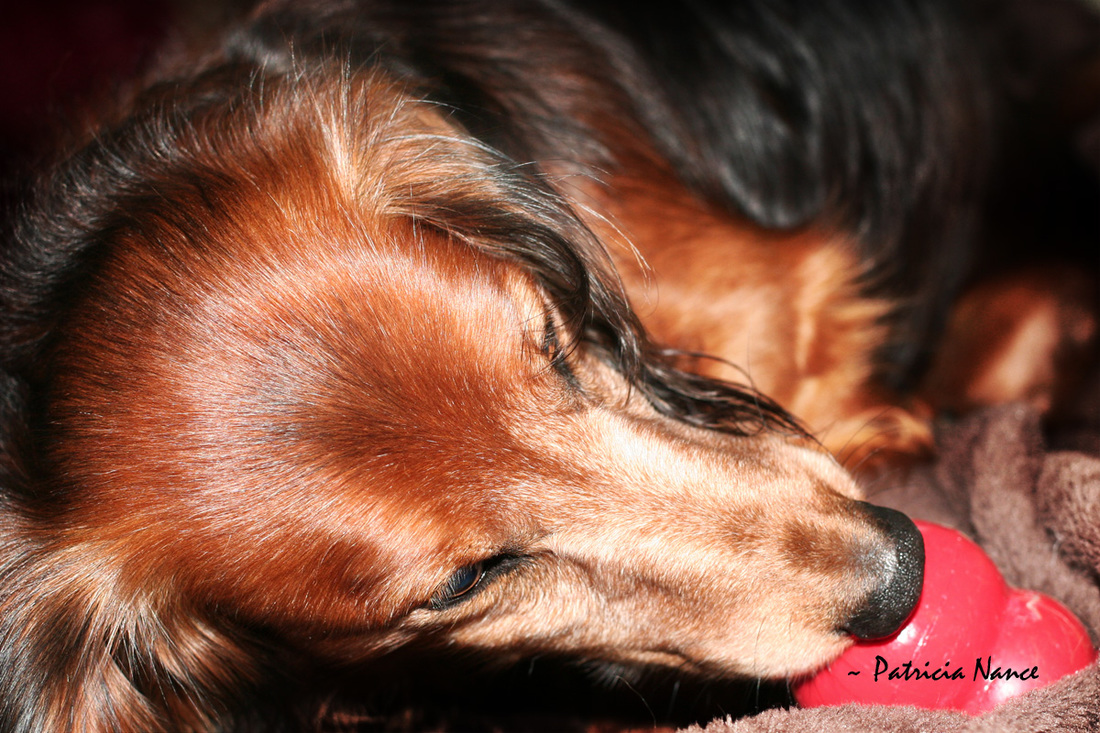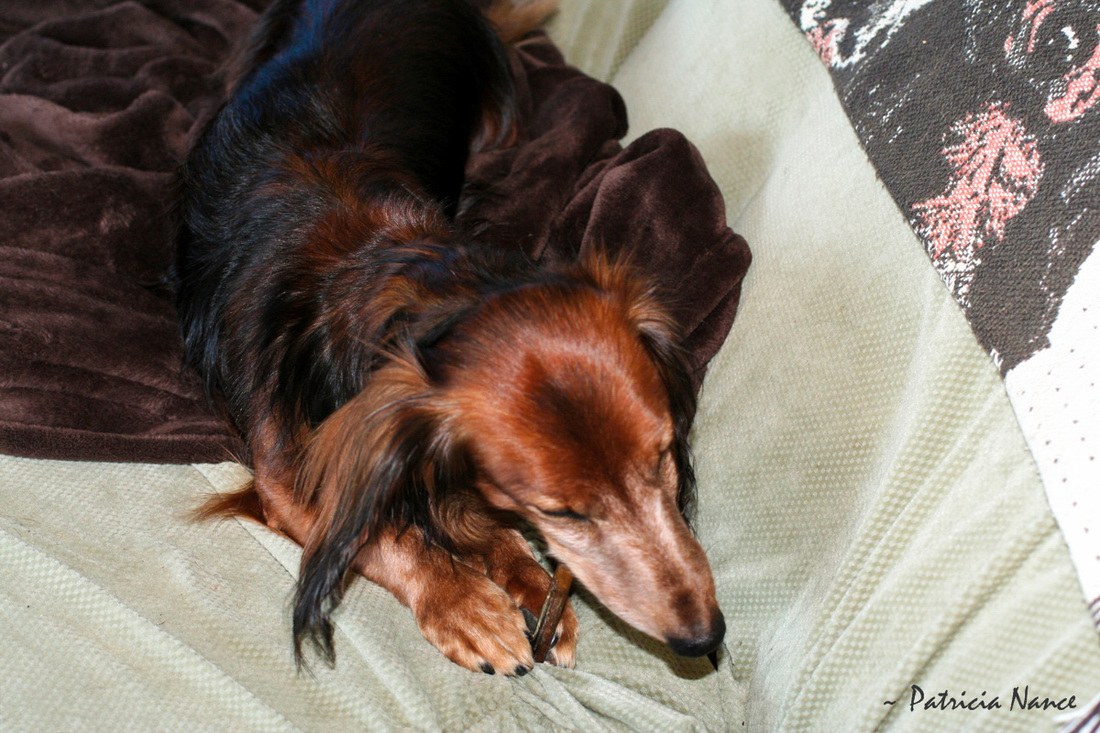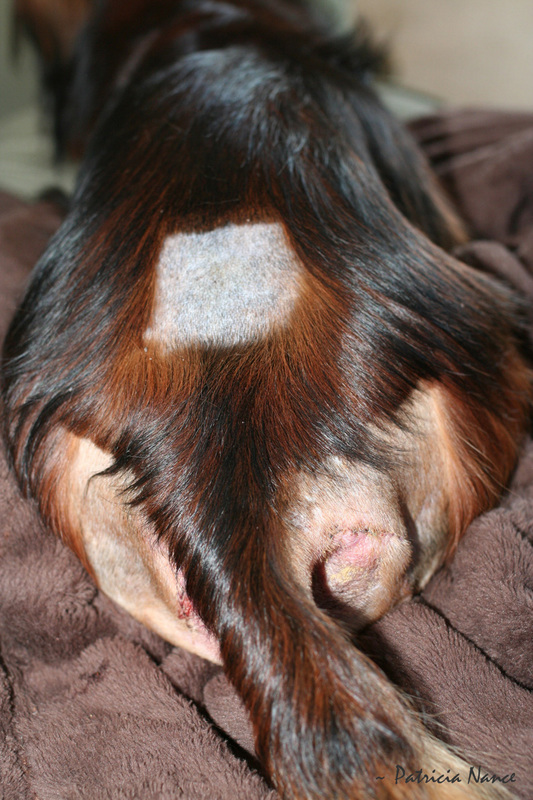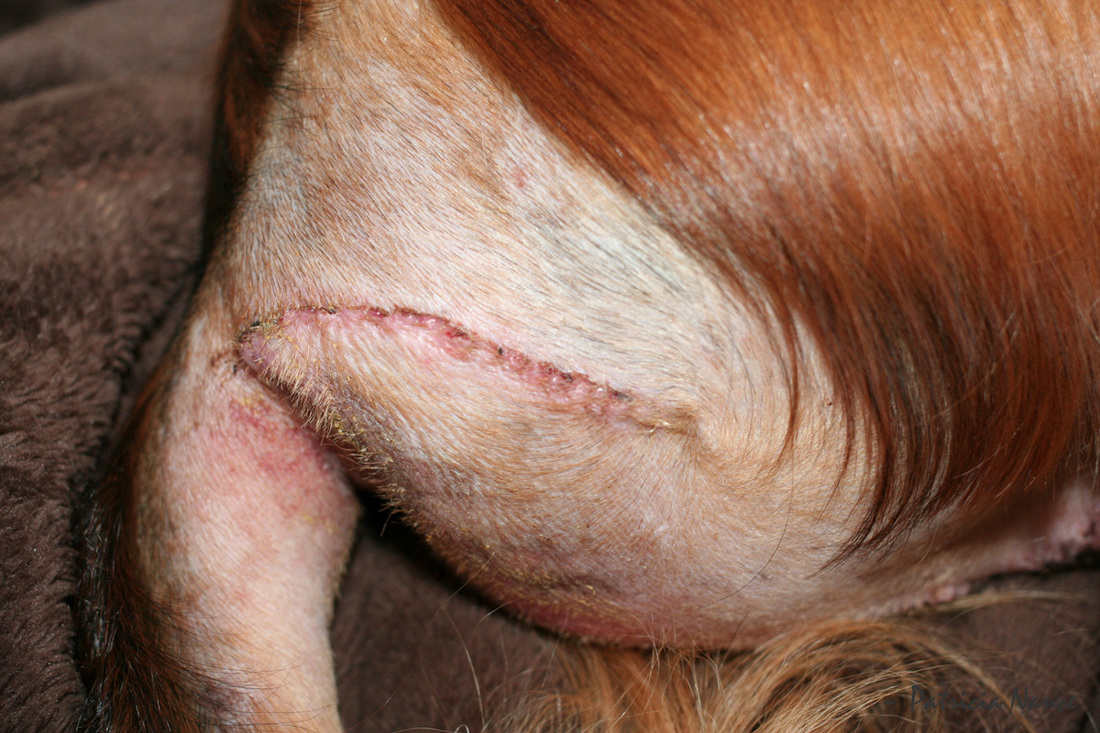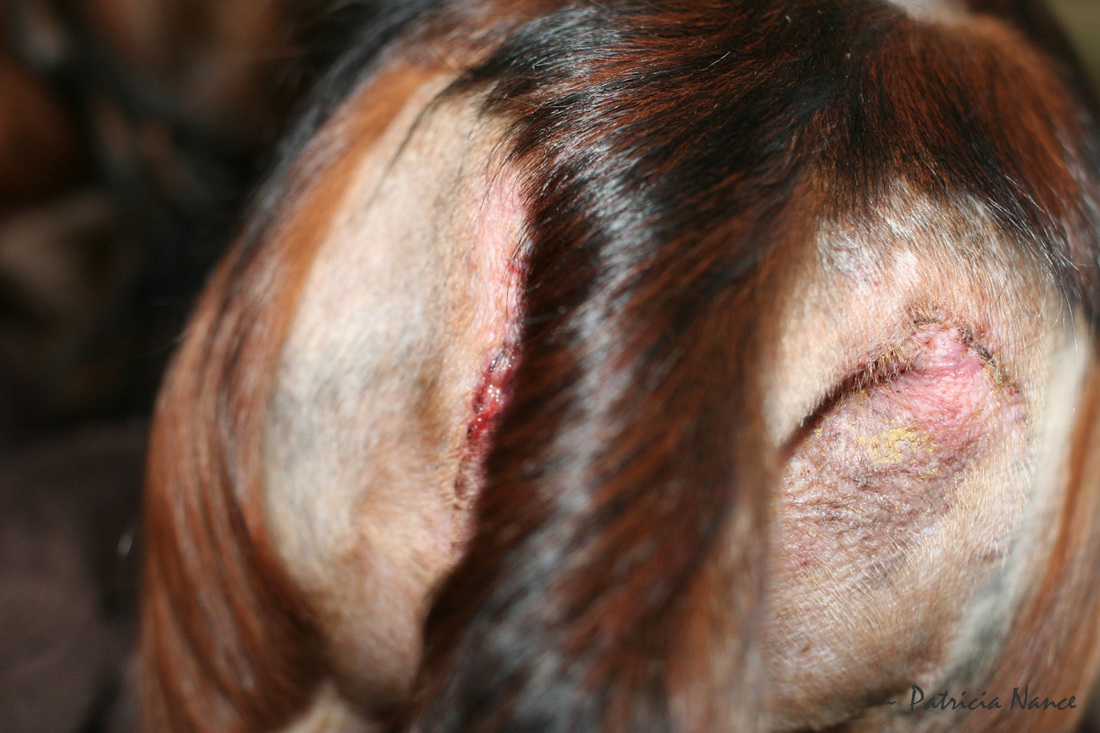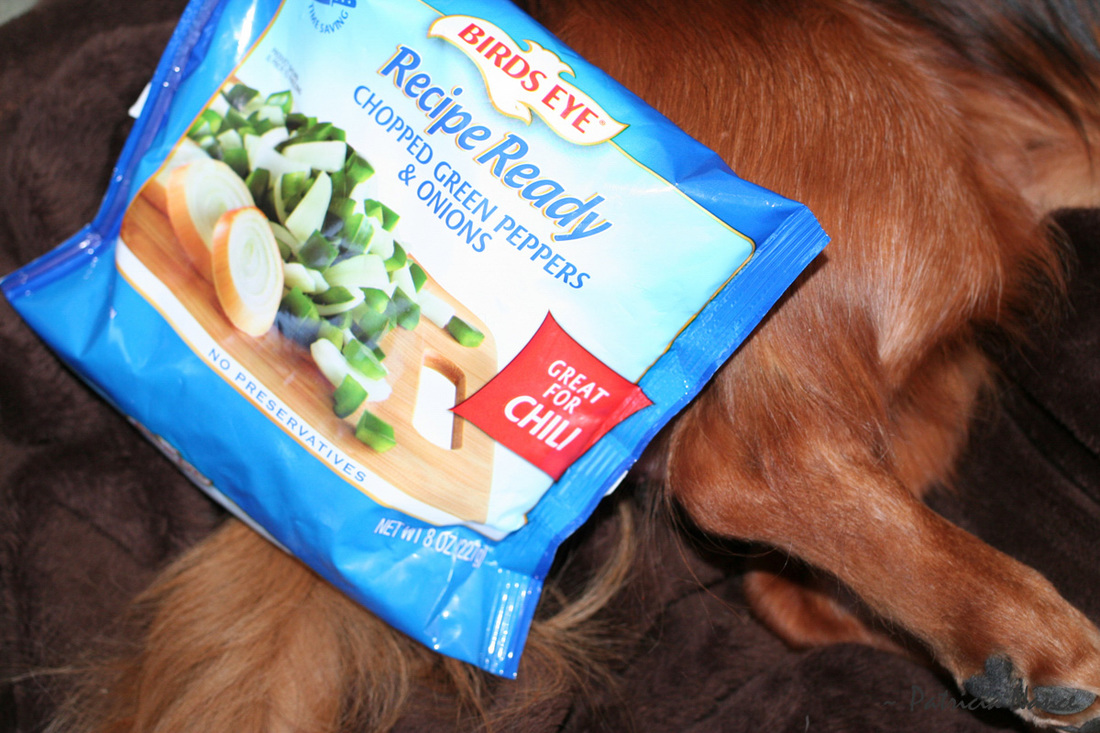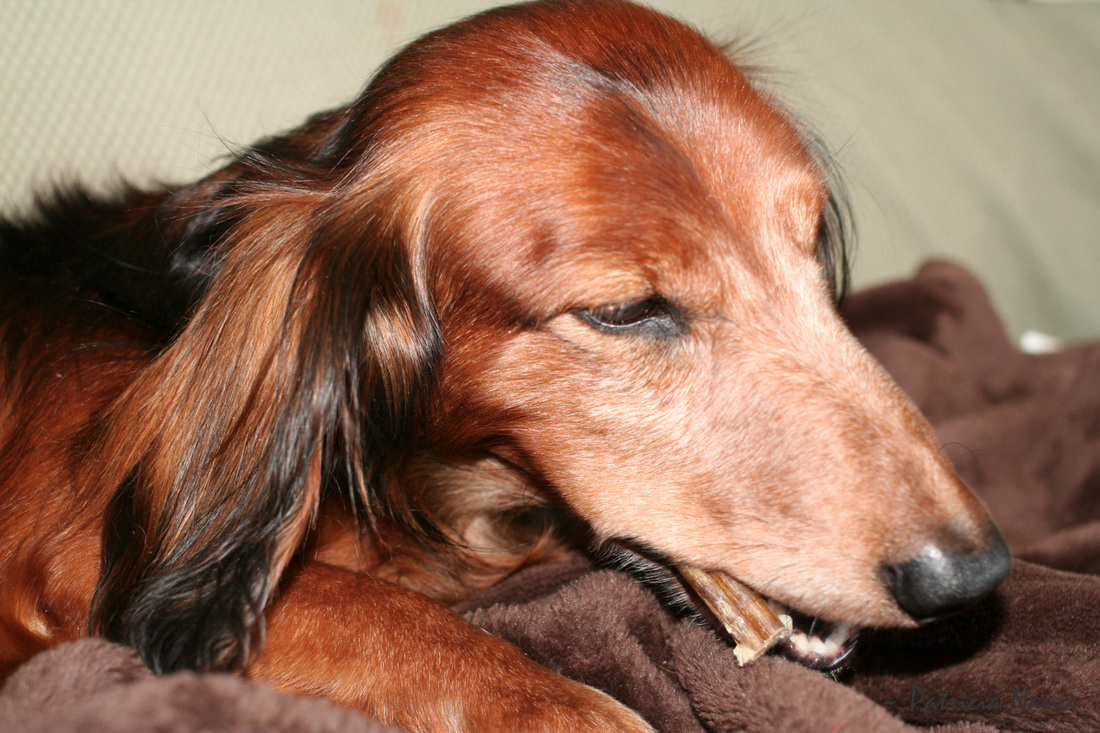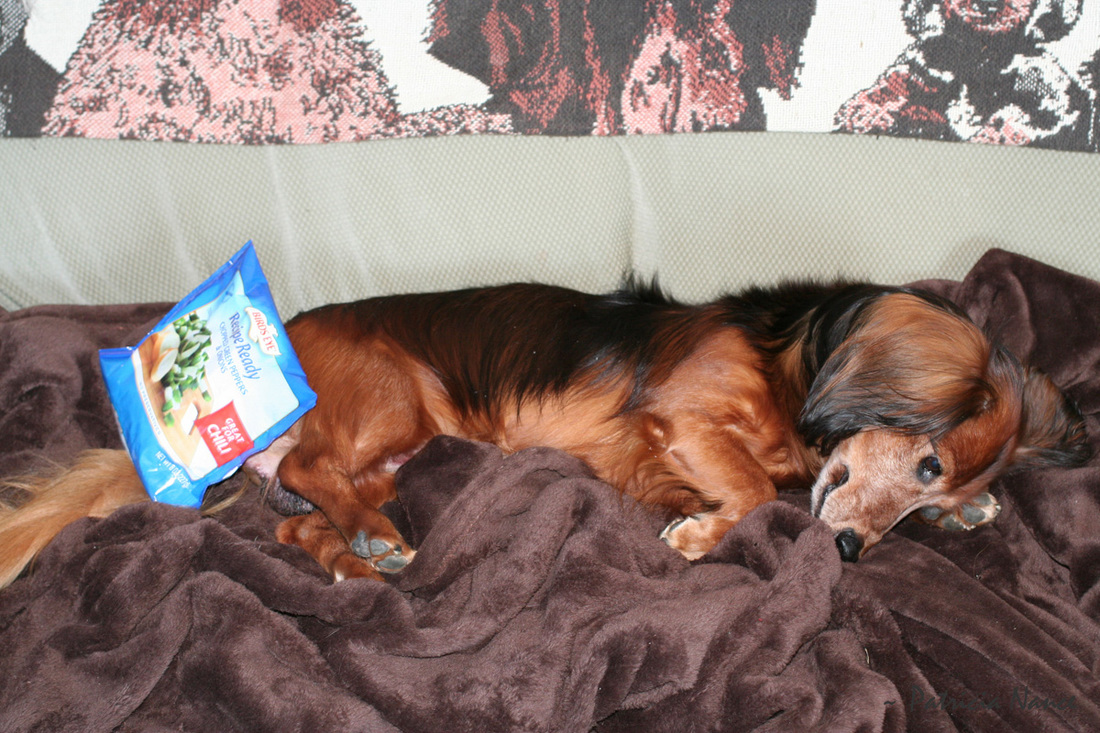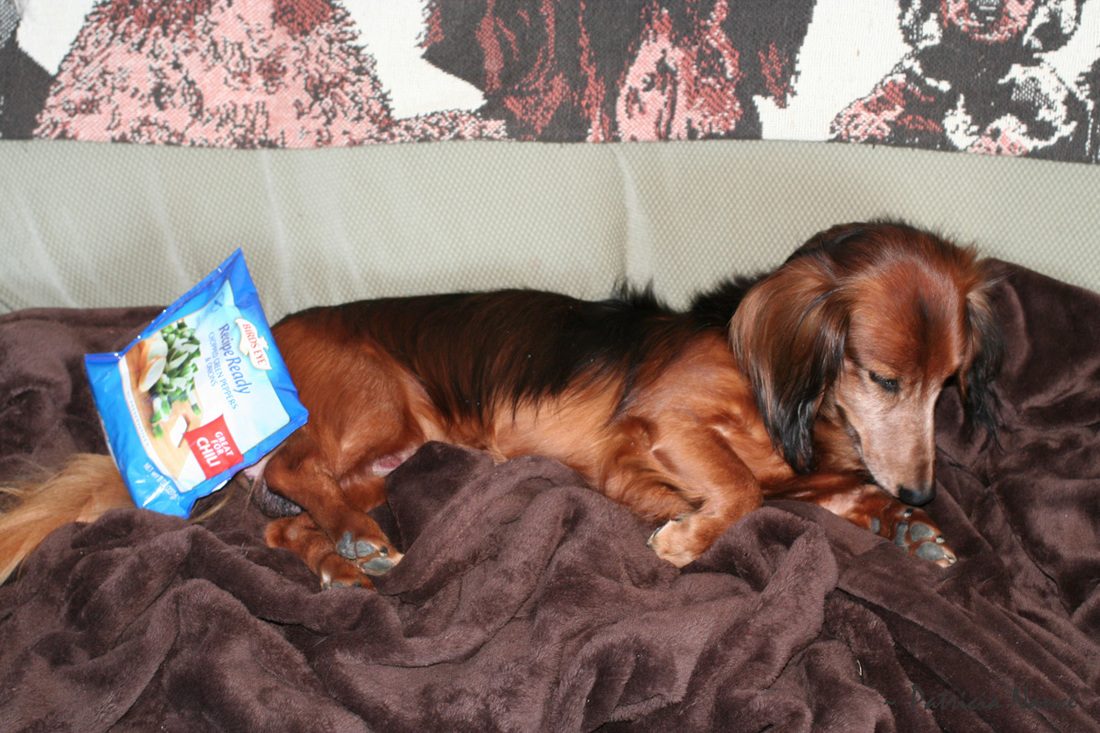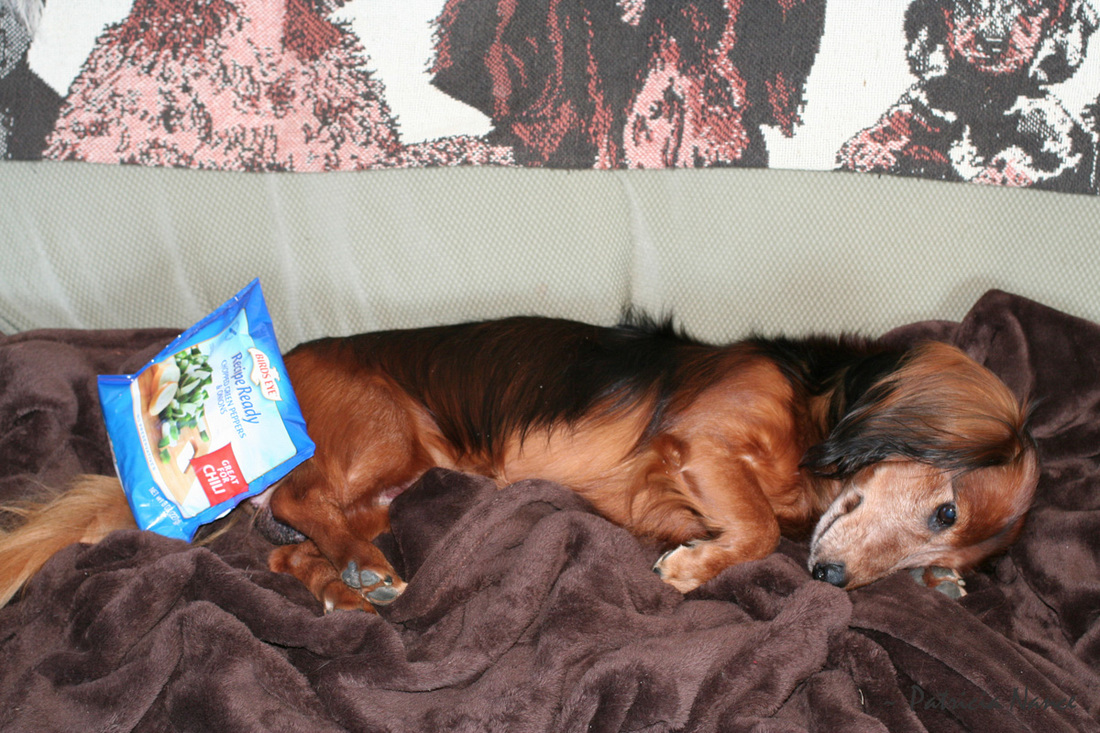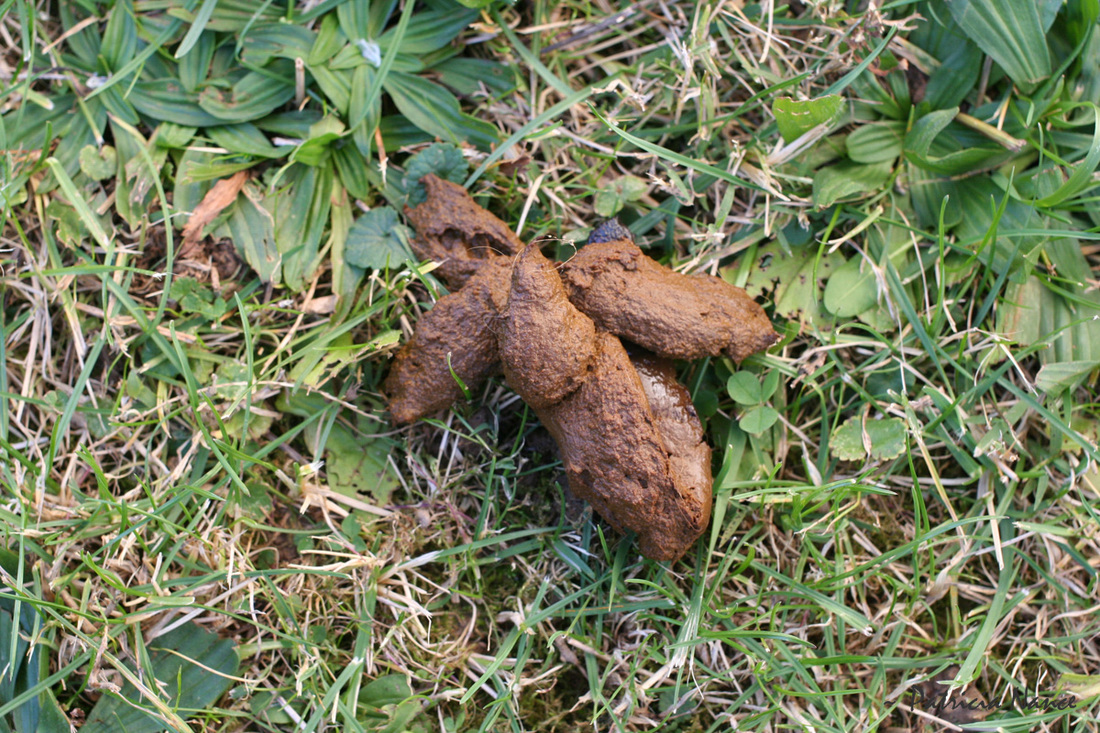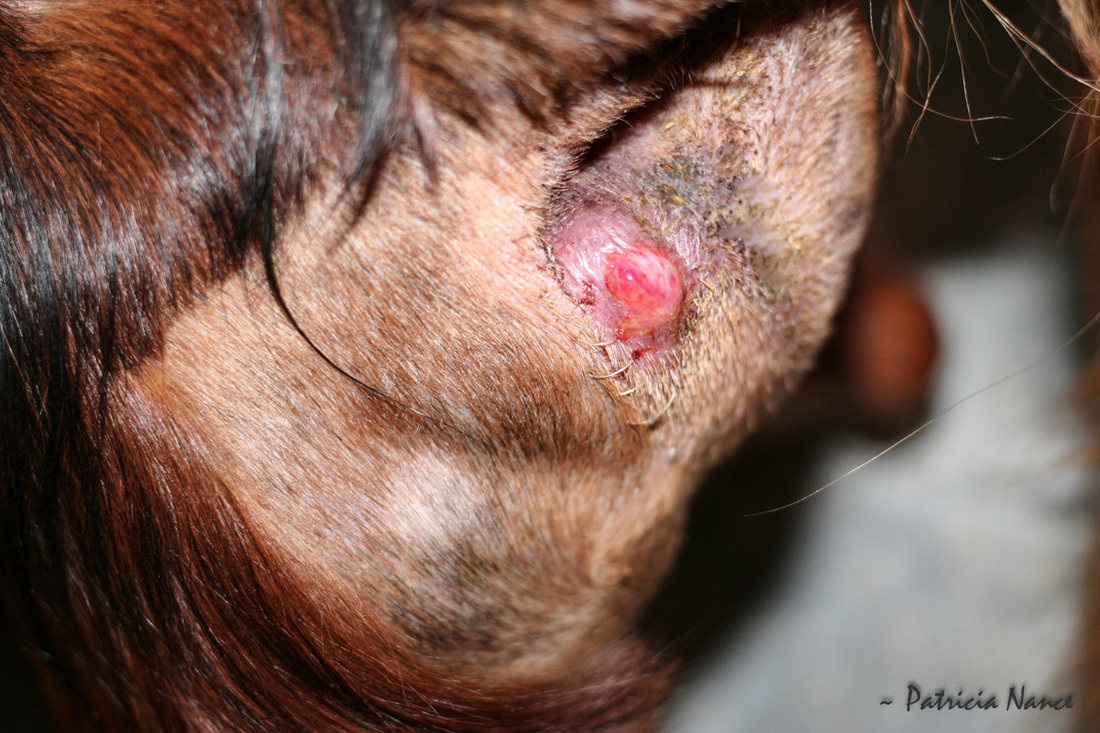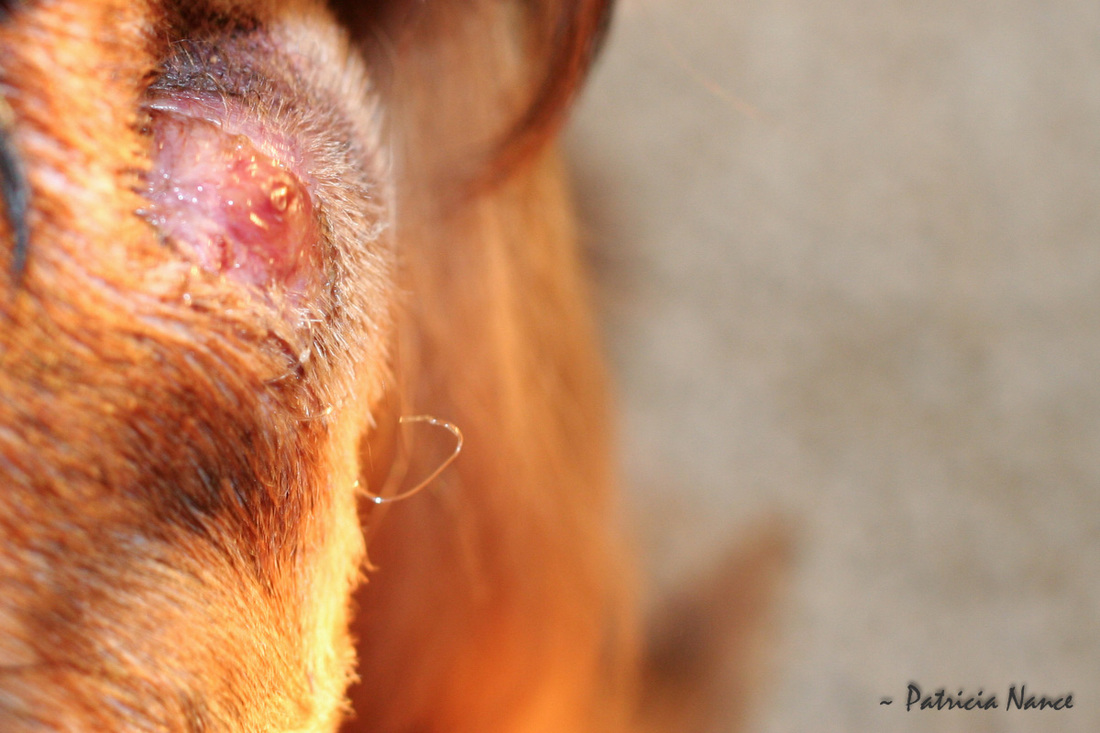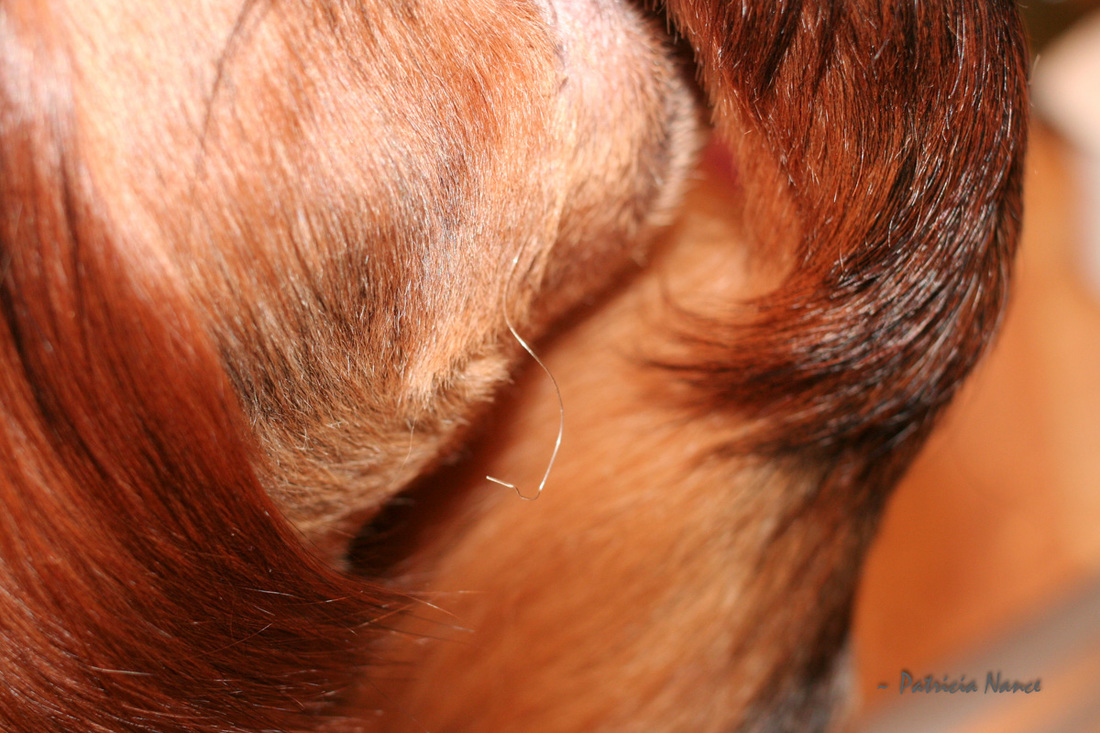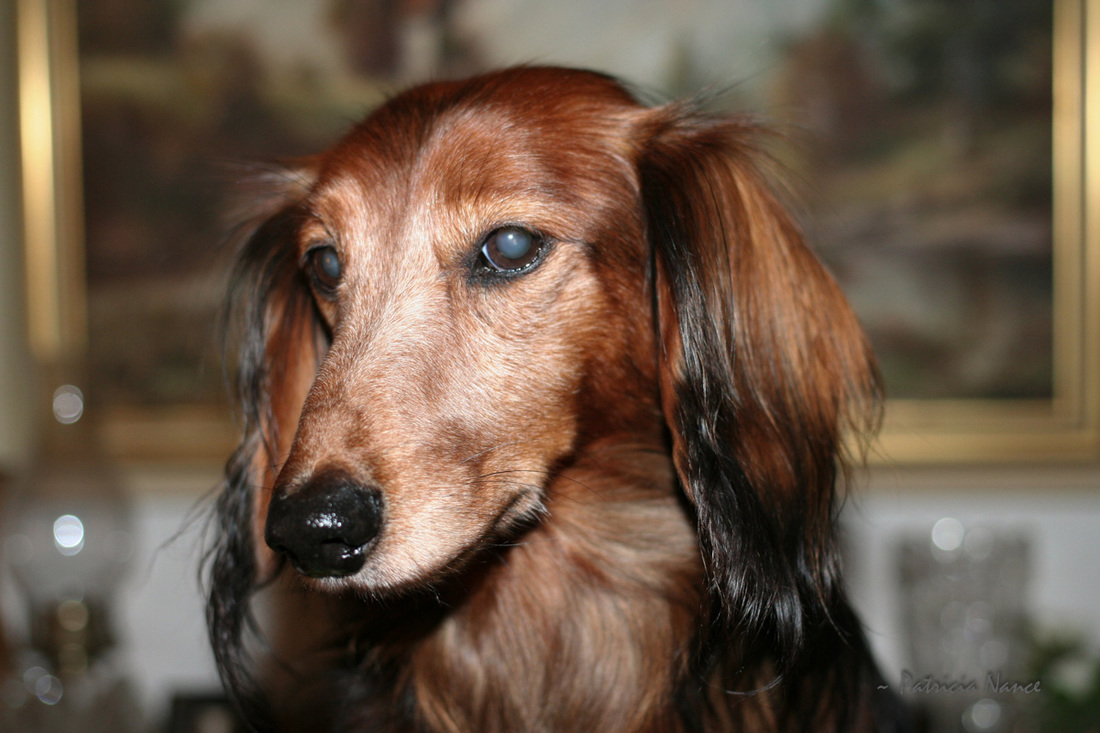Owl's perineal hernia repair
In late spring 2015, I saw that Owl suddenly had a soft lump under the skin on his butt, to the right and a bit higher than the anus. He also began taking longer to pass stool, though not (yet) overtly straining. Owl was examined by our veterinarian Dr Jeff Hustey in Zanesville, who told me that Owl had a perineal hernia. A what??
the road to surgery
Dr Hustey told me a bit about this condition which, honestly, I had never heard of in dogs. He said that surgical repair was ultimately the course of action and it should be done by a specialist. He recommended Ohio State University or Medvet, both in Columbus. I obtained expenses quotes from both veterinary hospitals and, thought long and hard: Medvet or OSU? OSU or Medvet? Medvet would cost more but in the end (ha!), my history of successful, if dire, experiences at Medvet and a bit of advice from Jennifer Fry led me to make the decision for Medvet.
Dr Hustey indicated this was not an emergency, and interim, conservative treatment consisted of daily doses of Miralax in Owl's food to soften his stools. This is what I did, one teaspoon more or less. Owl did not seem to notice the additive.
Dr Hustey indicated this was not an emergency, and interim, conservative treatment consisted of daily doses of Miralax in Owl's food to soften his stools. This is what I did, one teaspoon more or less. Owl did not seem to notice the additive.
In the meantime, still reeling from the loss of Taya in April, I'd begun communicating with the breeder of a litter of puppies in the Czech Republic. The pedigrees and specifics about the parents of this litter interested me very much. One email led to another and I became seriously intent on traveling overseas to see these puppies.
Now I had another major and difficult decision to make. The cost of the flight and puppy or the cost of Owl's surgery. If Owl had surgery, I could forget getting a puppy. If I got a puppy, Owl's surgery would have to be postponed. I could not count on the litter being repeated as the father was nine years old. It seemed like now or never. Neither decision would be all good or all bad. I put everything 'on the scale' and carefully weighed the options.
For better or for worse, and I can be criticized for it, I decided to go for the Czech puppy now and Owl's surgery later. I didn't live to regret it and for that, I am thankful with a capital T.
Now I had another major and difficult decision to make. The cost of the flight and puppy or the cost of Owl's surgery. If Owl had surgery, I could forget getting a puppy. If I got a puppy, Owl's surgery would have to be postponed. I could not count on the litter being repeated as the father was nine years old. It seemed like now or never. Neither decision would be all good or all bad. I put everything 'on the scale' and carefully weighed the options.
For better or for worse, and I can be criticized for it, I decided to go for the Czech puppy now and Owl's surgery later. I didn't live to regret it and for that, I am thankful with a capital T.
Jennifer kept Owl for me when I visited the Koch Family, in Pennsylvania in August. While she had him, she offered to take Owl for the surgical consult since she lives much closer to Medvet than I do. They met with Dr Robert Dudley on August 25. Dr Dudley is a Veterinary Surgical Specialist with a focus on soft tissue surgery. Owl was examined and lab work was done.
In early September, I visited Cliff and Cheryl Shrader in Louisiana to meet and evaluate Teo's and Tasha's four puppies. In early October, I was gone to Illinois for a week of judging field trials. This was also when one of the two puppies I'd brought from the Czech Republic went to his new home. In late October, finally, I scheduled Owl's surgery for Tuesday, November 10.
In early September, I visited Cliff and Cheryl Shrader in Louisiana to meet and evaluate Teo's and Tasha's four puppies. In early October, I was gone to Illinois for a week of judging field trials. This was also when one of the two puppies I'd brought from the Czech Republic went to his new home. In late October, finally, I scheduled Owl's surgery for Tuesday, November 10.
I will use photos and captions to tell the rest of the story. I do regret not having better 'before' photos. It was only on the way to Medvet the morning of surgery that I decided to write this article. My hope is that others will glean helpful information from it.
November 10
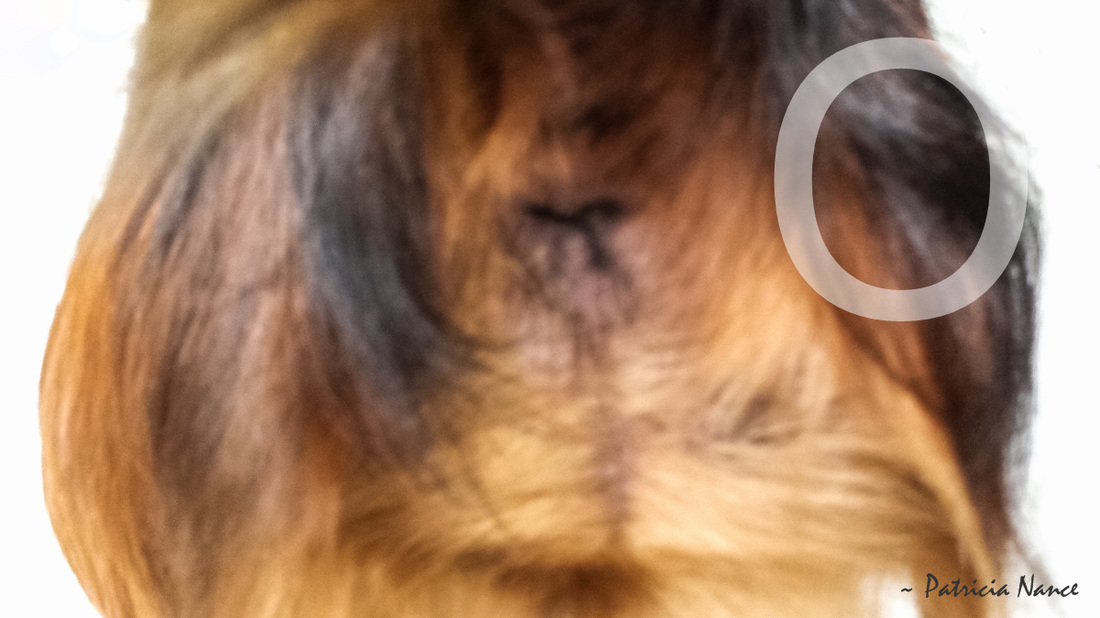
The morning of surgery. Sorry about the quality of this photo. I took it with my phone in the car just before taking Owl into Medvet. It is not a good picture of the hernia bulge but I have outlined where it was. You can see how the hair on the right side is sticking up because of it. I've seen photos of dogs whose hernias are much, much larger. I am so glad that wasn't the case with Owl.
November 12
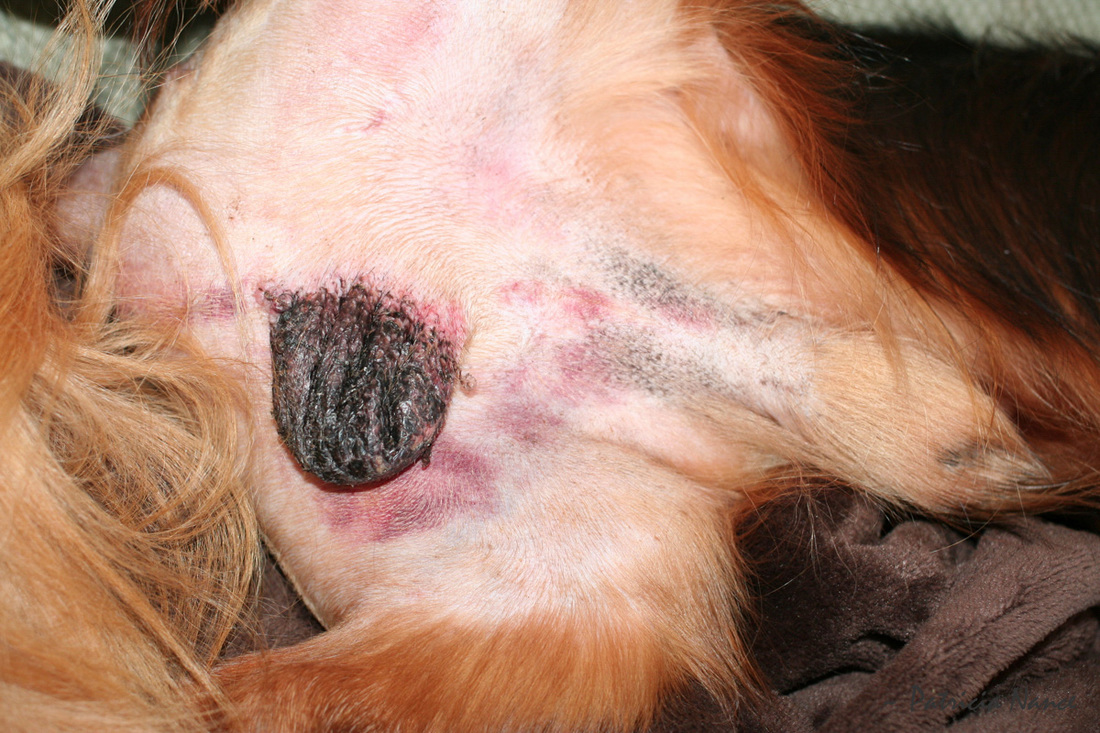
Neutering is part of the treatment for this problem which, believed to be driven by testosterone, is nearly always seen in intact males. I have never had a dog castrated before but in this case, it was certainly indicated. You can see all the bruising but that is to be expected. I have seen photos of the positions dogs must be in on the OR table for this type of hernia repair.
Post-operative prescriptions:
Carprofen 12.5 mg two times daily for 10 days
Traumeel 0.5 tablet two times daily for 7 days
Tramadol 25 mg three times daily for 7 days
Continue the Miralax powder, one teaspoon or less on his food ever day.
Carprofen 12.5 mg two times daily for 10 days
Traumeel 0.5 tablet two times daily for 7 days
Tramadol 25 mg three times daily for 7 days
Continue the Miralax powder, one teaspoon or less on his food ever day.
November 13
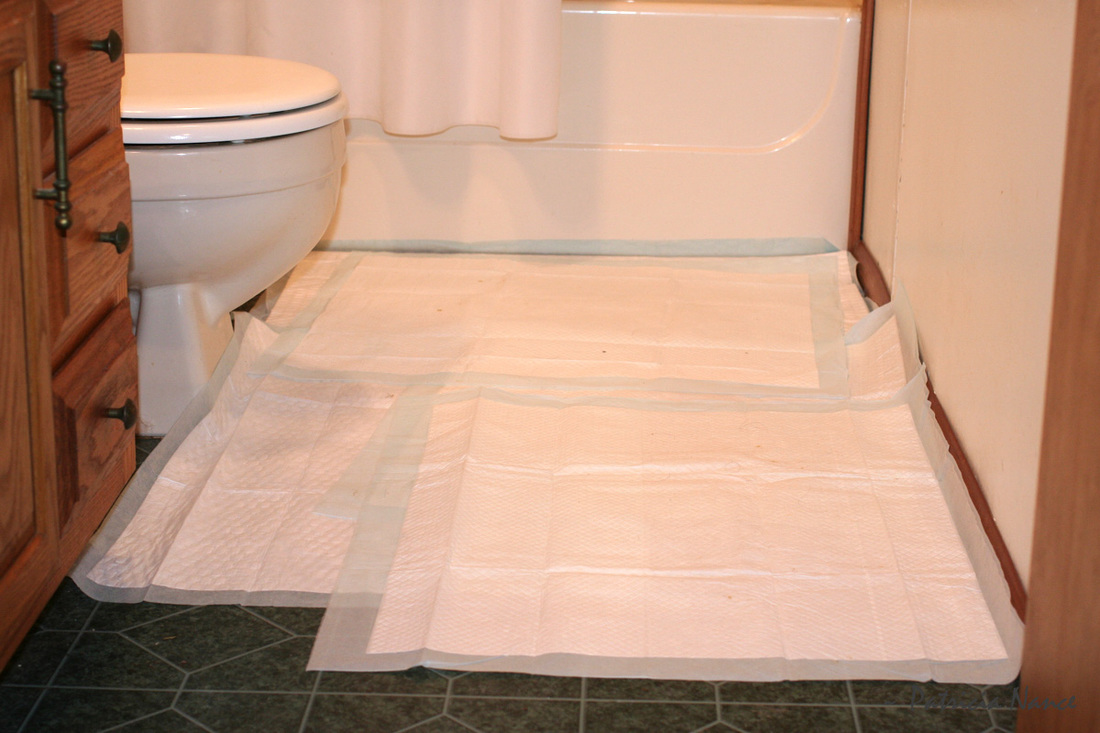
I'd realized somewhere along the line that Owl did not strain as much to move his bowels when he had free access to places to do it. In other words, when he wasn't crated. Therefore, Owl did not see the inside of a crate for weeks before his surgery. Pee pads on the bathroom floor gave him an acceptable place to eliminate indoors and helped a lot in this regard. I am keeping them down for a few days post-op but Owl hasn't used them...
November 14
November 15
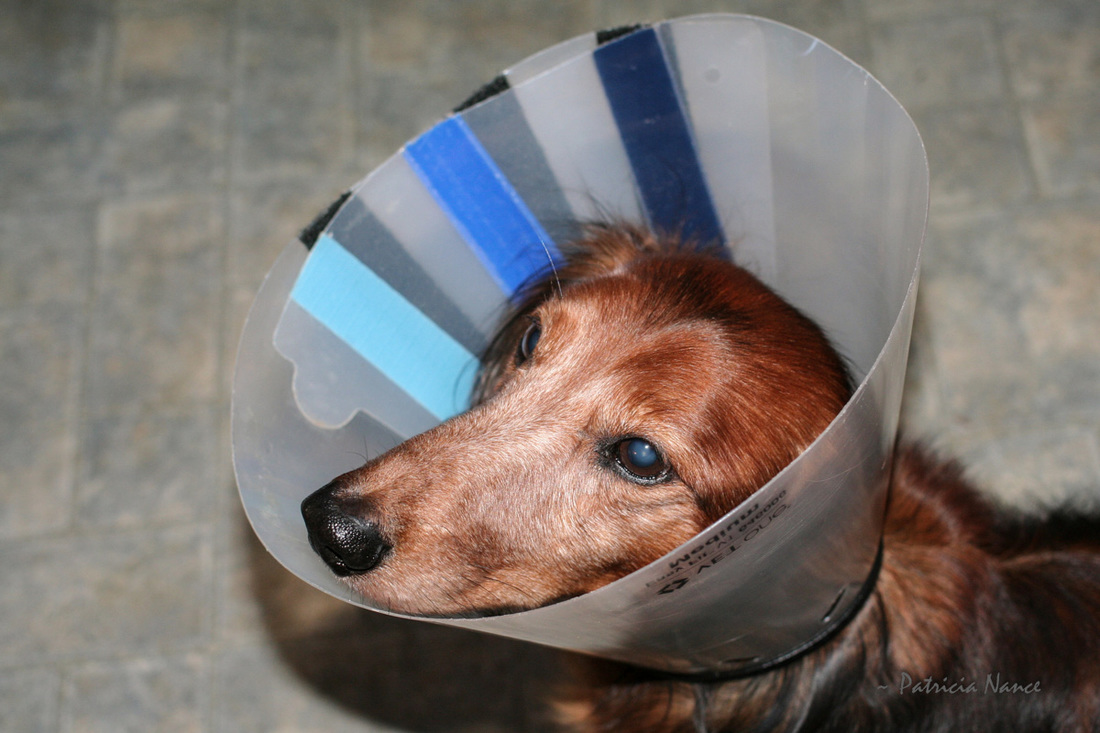
Anytime Owl is not the center of my attention and within easy reach, he is wearing the cone collar. Everyone should appreciate how important this is! A quick minute or two with an irritating incision can become a whole 'nother surgery after a dog's teeth get through with it. Owl doesn't like wearing it of course. But I have given him a few small soft treats hand-to-mouth each time I put it on which helps him not mind it so much. Owl wants to lick his incisions and this collar is keeping him from doing that.
November 16
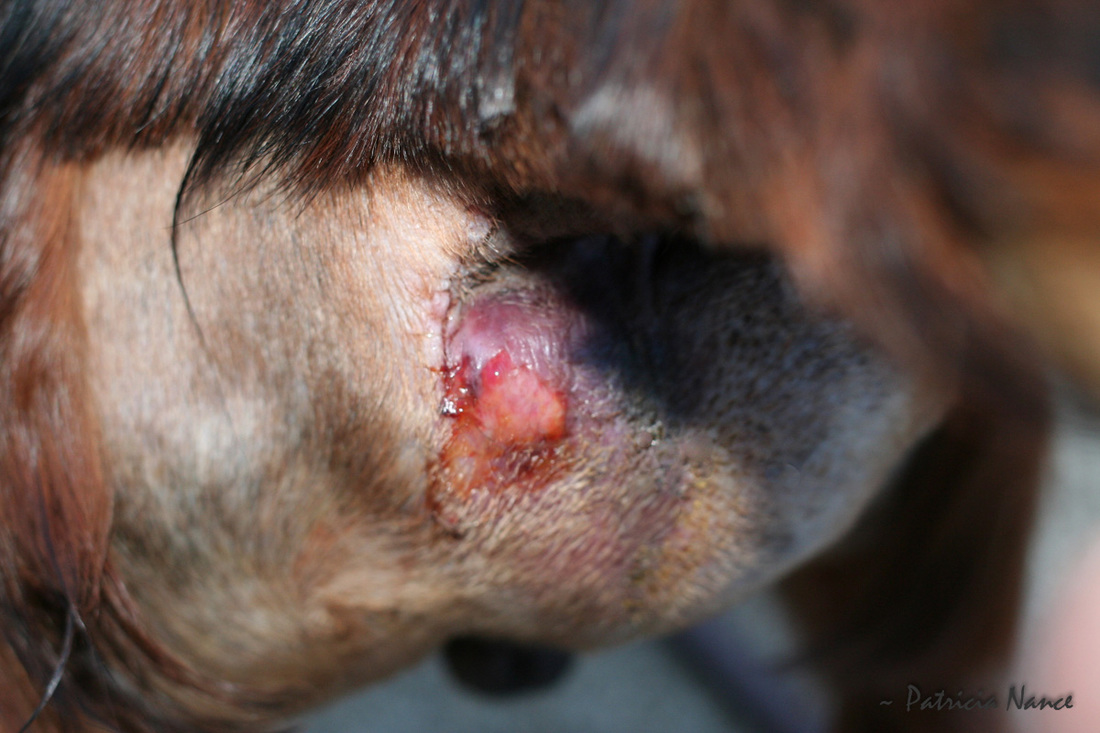
Or, at least I THOUGHT the cone collar was keeping Owl from licking his wounds. However, the combination of a long neck and long and slender body has allowed him to reach it. How? First, he figured out to to jam the collar completely to the base of his neck and keep it there with his hind leg as he curled to reach his butt. If I hadn't seen him do it, I wouldn't quite believe it - even if the wound does look like a lick wound which it is. I put his regular collar at the base of his neck to keep the cone collar up higher. He still reached and licked. I put two collars on below the cone collar. We were good for a day. Then I caught Owl pushing the mouth end of the cone against the wall and using the wall for leverage in cramming all the collars together on his neck and curling round to lick. The reaching took effort but he was successful.
November 17
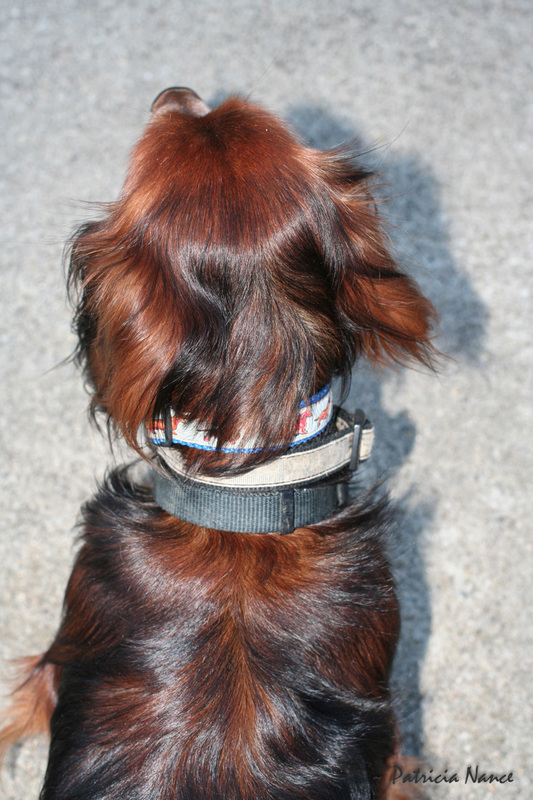
We have gone to three collars on his neck before the cone collar goes on. This should eliminate the possibility of Owl cramming the cone collar to the base of his neck so he can turn and 'attend' to the incisions. Today is the last day for two of the three medications. Appetite is good, stools are normal. And when we are out, Owl is looking for the cat. She is what his attention is on in this photo.
November 18
November 20
November 28
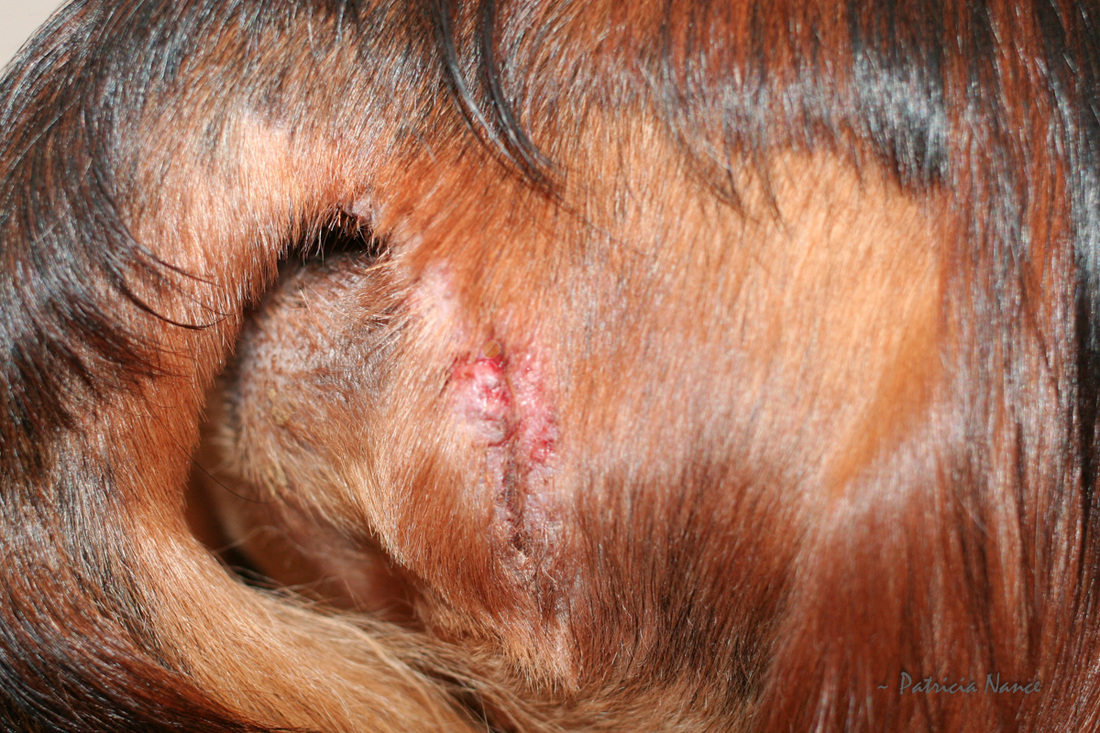
I thought this morning when I took Owl outside that I should get a photo of the right-side incision soon as the suture was even more obviously nearly gone. What I was seeing this morning was not there this evening when I took the photo. The incision has been looking great, I see that it is a bit reddened in places. I will keep an eye on this. Owl was out for awhile this afternoon; my theory is that he scratched the skin a bit on the gravel.
November 29
thank you
A great many thanks to Dr Dudley and all the Medvet staffers involved in Owl's care and surgery. I appreciate the nature of Owl's problem and the scope of the talent and effort involved in fixing it.
some Internet information
Article - Perineal hernia occurs when pelvic diaphragm muscles fail to support the rectal wall, allowing persistent rectal distention and impaired defecation.
Article - Perineal hernia is a condition where the muscles in the pelvis weaken and separate allowing organs and tissues to prolapse through this new space. A swelling adjacent to the anus may occur as a result. Older intact male dogs (un-neutered) are the most commonly affected, although it can occur in any breed of dog or cat.
Article - Perineal hernia is the protrusion of pelvic or abdominal viscera through the structures of the weakened or ruptured pelvic diaphragm, causing displacement of the perineal skin. The pelvic diaphragm is composed of the coccygeus, levator ani and external anal sphincter muscles and, due to its proximity to these structures, the rectum is the organ most commonly involved in perineal hernias.
Video - surgical correction of perineal hernia in dogs left side
Article - Perineal hernia is a condition where the muscles in the pelvis weaken and separate allowing organs and tissues to prolapse through this new space. A swelling adjacent to the anus may occur as a result. Older intact male dogs (un-neutered) are the most commonly affected, although it can occur in any breed of dog or cat.
Article - Perineal hernia is the protrusion of pelvic or abdominal viscera through the structures of the weakened or ruptured pelvic diaphragm, causing displacement of the perineal skin. The pelvic diaphragm is composed of the coccygeus, levator ani and external anal sphincter muscles and, due to its proximity to these structures, the rectum is the organ most commonly involved in perineal hernias.
Video - surgical correction of perineal hernia in dogs left side
